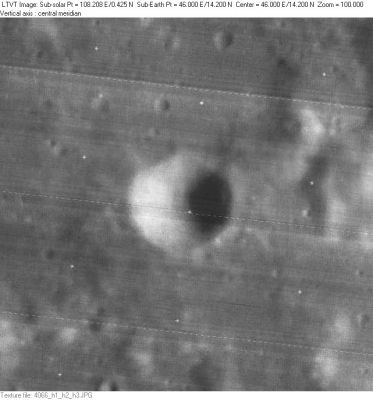Crile
Contents
Crile
(formerly Proclus F)
|
Lat: 14.2°N, Long: 46.0°E, Diam: 9 km, Depth: 2.02 km, Rükl: 37 |
Images
LPOD Photo Gallery Lunar Orbiter Images Apollo Images
- Because Crile's (Proclus F's) location is not very far away of the pronounced high-albedo crater Proclus, it should be very easy to detect it on the panoramic ITEK-camera frames made during Apollo 15 and Apollo 17.
Crile on ITEK frames:
- Crile was captured on Apollo 17's panoramic ITEK-camera frames AS17-P-2702 and AS17-P-2707. In both frames, Crile is the crater at centre of your screen (you don't have to scroll toward the frame's right margin).
- In Apollo 15's AS15-P-9509, it (Crile) was captured at the central part of the frame (scroll to the right).
- A southward oblique look at Crile is Apollo 15's AS15-P-9245 (Crile is the crater very near the upper left corner of the frame).
- Additional research orbital Apollo photography: Danny Caes
Maps
(LAC zone 61B2) LAC map Geologic map LTO map
Description
Description: Wikipedia
Additional Information
- Depth data from Kurt Fisher database
Westfall, 2000: 2.02 km
Viscardy, 1985: 1.5 km - Included on the ALPO list of banded craters
Nomenclature
- George Washington Crile (January 7, 1864 - November 11, 1943) was a significant American surgeon. Crile is now formally recognized as the first surgeon to have succeeded in a direct blood transfusion.
- This replacement name for a formerly lettered crater was provisionally introduced on LTO-61B2. - Jim Mosher
LPOD Articles
Bibliography
